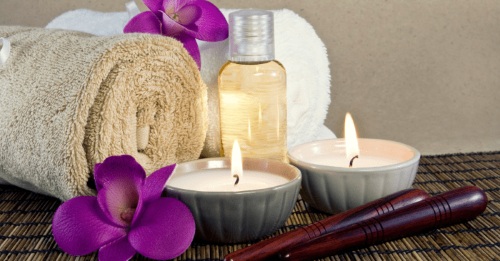Exploring Japanese Massage Types
Indulge in a Luxurious Treatment with a Skilled Masseuse
Curious about the ancient art of Japanese massage? For centuries, Japan has cultivated a variety of massage techniques, each with its own unique approach and benefits.
In this article, we’ll take you through the different types of Japanese massage, their specific methods, and the potential health benefits they offer. Read on to explore the rejuvenating world of Japanese massage and find the perfect technique for you.

Understanding Japanese Massage
Although rooted in traditional Chinese medicine, Japanese massage has developed into a distinctive practice that blends Japan's cultural and therapeutic traditions. The primary goal is to encourage natural healing by targeting the body's pressure points and energy pathways, promoting balance and overall well-being.
Different Types of Japanese Massage
Japanese massage includes several distinct techniques, each refined over centuries to address various physical and mental health needs. The most well-known forms are Shiatsu, Kobido, and Anma.

Shiatsu Massage
Shiatsu uses pressure along energy pathways (meridians) to balance Qi (vital energy) and promote healing. Therapists use thumbs, palms, elbows, and even feet, along with stretching and rocking motions, to relieve tension and support emotional well-being.
Kobido Massage
Kobido is a facial massage that improves skin tone, reduces puffiness, and stimulates lymphatic flow using finger pressure and lifting techniques. It enhances radiance and firmness in a non-invasive way.
Anma Massage
Anma is a full-body therapeutic practice using rhythmic pressure, rotation, and elongation to relax muscles, reduce pain, and restore balance in the body’s meridians. It’s deeply connected to traditional healing systems.

Techniques Involved in Japanese Massage
Japanese massage incorporates a variety of hands-on techniques such as:
Rocking
Gentle wave-like motions help release muscular tension and induce deep relaxation.
Pressure
Applied to acupressure points using palms, thumbs, and fingers to stimulate circulation and energy flow.
Elongation
Involves stretching and kneading to release tension and enhance flexibility.
Rotation
Circular and twisting movements that improve joint mobility and energy balance.
Benefits of Japanese Massage
- Muscle tension relief
- Stress and anxiety reduction
- Improved sleep and reduced fatigue
- Enhanced circulation and flexibility
- Stimulation of energy flow and self-healing
- Immune system support
- Lower blood pressure
Note: Benefits can vary. If you have a medical condition, consult a healthcare provider before starting massage therapy.
How Japanese Massage Differs from Other Therapies
Unlike Swedish or deep tissue massage, Japanese massage:
- Uses little or no oils, focusing on acupressure points
- Incorporates rocking, stretching, and energy-based techniques
- Utilizes the whole body—palms, elbows, knees, even feet—to apply pressure
Japanese massage is more holistic, focusing on energy flow and internal balance rather than just muscle manipulation.
Where to Find an Authentic Japanese Massage
Look for licensed therapists or clinics specializing in traditional Japanese techniques such as Shiatsu, Kobido, or Anma. These services are often available at:
- Holistic wellness centers
- Japanese cultural or healing centers
- Retreats and spas with Eastern therapy offerings
Be sure to check for qualifications and experience to ensure authenticity and safety.